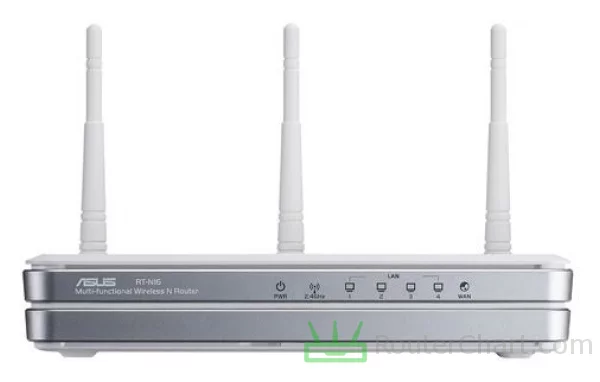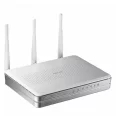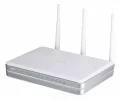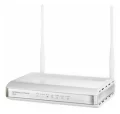Asus RT-N16 router review
Asus introduced the RT-N16 router in 2009. It is powered by Broadcom BCM4718A1 @ 480 MHz chipset, 128 MB of RAM, and 32 MB of flash memory.
Want to know if this Asus router stands out? Keep reading to find out!
Table of Contents
- Asus RT-N16 specifications
- Body, dimensions, weight
- System, chipset, RAM, flash, power supply
- Network, protocols, WAN and LAN ports
- Wireless, antennas, speed, security
- Connectivity
- Administration, user interface, login information
- Links
- Verdict, Pros and Cons
- Photos
- Comparisons
Our personal experiences and opinions form the basis of this article. We aimed to share insights on a topic, and we hoped others would find it useful and inspirational. If you noticed any mistakes or missing details about the Asus RT-N16, please let us know.

If you need more features, you may want to consider better Asus routers. Asus has a history of introducing innovative features and technologies into its products.
Asus RT-N16 specifications
| Brand | Asus |
|---|---|
| Name | RT-N16 |
| Type | RT-N16 |
| Rating | |
| Launch | 2009 |
Body
| Dimensions | 216 x 161.9 x 40.5 mm |
|---|---|
| Weight | 470 g |
If you plan to move a lot and need to take your router with you, the size is important. Otherwise, the size isn't too crucial. If you buy a router online or have it shipped, the weight may affect the total cost.

System
| Chipset | Broadcom BCM4718A1 @ 480 MHz |
|---|---|
| RAM | 128 MB |
| Flash | 32 MB |
| OS | Asus |
| Alternative OS | OpenWRT DD-WRT |
| Power supply | 12 V / 1.25 A |
The Broadcom BCM4718A1 @ 480 MHz CPU provides processing power. Some router features and software work best when they have enough RAM to help them. OpenWrt offers many customization options. They let users change and tailor their router's functions to their needs.

Network
| Protocols | IPv4 |
|---|---|
| LAN ports | 4 x 10/100/1000 Mbps |
| WAN ports | 1 x 10/100/1000 Mbps |
| Mobile network | no |
| VPN support | PPTP L2TP |
If you have a 1 Gbps or faster internet plan, you need gigabit Ethernet ports. The RT-N16 ensures that you can use fast internet from your ISP fully.

Wireless
| Antennas | 3 x 2 dBi RP-SMA |
|---|---|
| 2.4 GHz | yes |
| 5 GHz | no |
| 60 GHz | no |
| Standards | IEEE 802.11b/g/n |
| Class | N300 |
| Speed | 300 Mbps |
| Transmit power | 21 dBm |
| Security | WEP WPA WPA2 |
| Guest network | yes |
The RT-N16 is compatible with 2.4 GHz Wi-Fi networks. This is a Wi-Fi 4 router, with slower data transfer speeds. This can result in slower downloads, buffering, and reduced performance. The introduction of WPA2 (Wi-Fi Protected Access 2) improved upon WEP. It provides stronger security.
Connectivity
| USB ports | 2 x USB 2.0 |
|---|---|
| Print server | yes |
| File server | yes |
The USB 2 port has a maximum theoretical data transfer rate of 480 megabits per second (Mbps). By connecting a USB printer to the RT-N16 router, you can make it accessible to all devices on your network. This router has a USB file server. It lets you connect external storage devices to your network.
Administration
| Default IP | 192.168.1.1 |
|---|---|
| Default username | admin |
| Default password | admin |
If you can't log in to your Asus router's setup panel, try resetting it. A reset can help you troubleshoot. It is highly recommended to change the default password of your RT-N16 router. Do this after the initial setup.
Links
| Official site | https://www.asus.com/ |
|---|
Pros and Cons
Every router, including this Asus one, has its good sides and not-so-good sides. Let's take a closer look at both to get a full understanding of what this router can do. Just remember, this is just what I think, and you might see things differently.
Pros
- sufficient memory
- OpenWrt compatible
- high-speed LAN port
- high-speed WAN port
- USB 2 compatible
- printserver functionality
- fileserver operation
Cons
- missing Wi-Fi 6 support
- lacks Wi-Fi 5 compatibility
- reduced Wi-Fi bandwidth
- incompatible with WPA3
- missing WPS support
Asus RT-N16 photos





Asus RT-N16 comparisons
We've noticed that many of our visitors like to compare the Asus RT-N16 router with these popular models.
If there’s information about the Asus RT-N16 that you would like to see on this site, then write to us.
Updated: May 25, 2024





